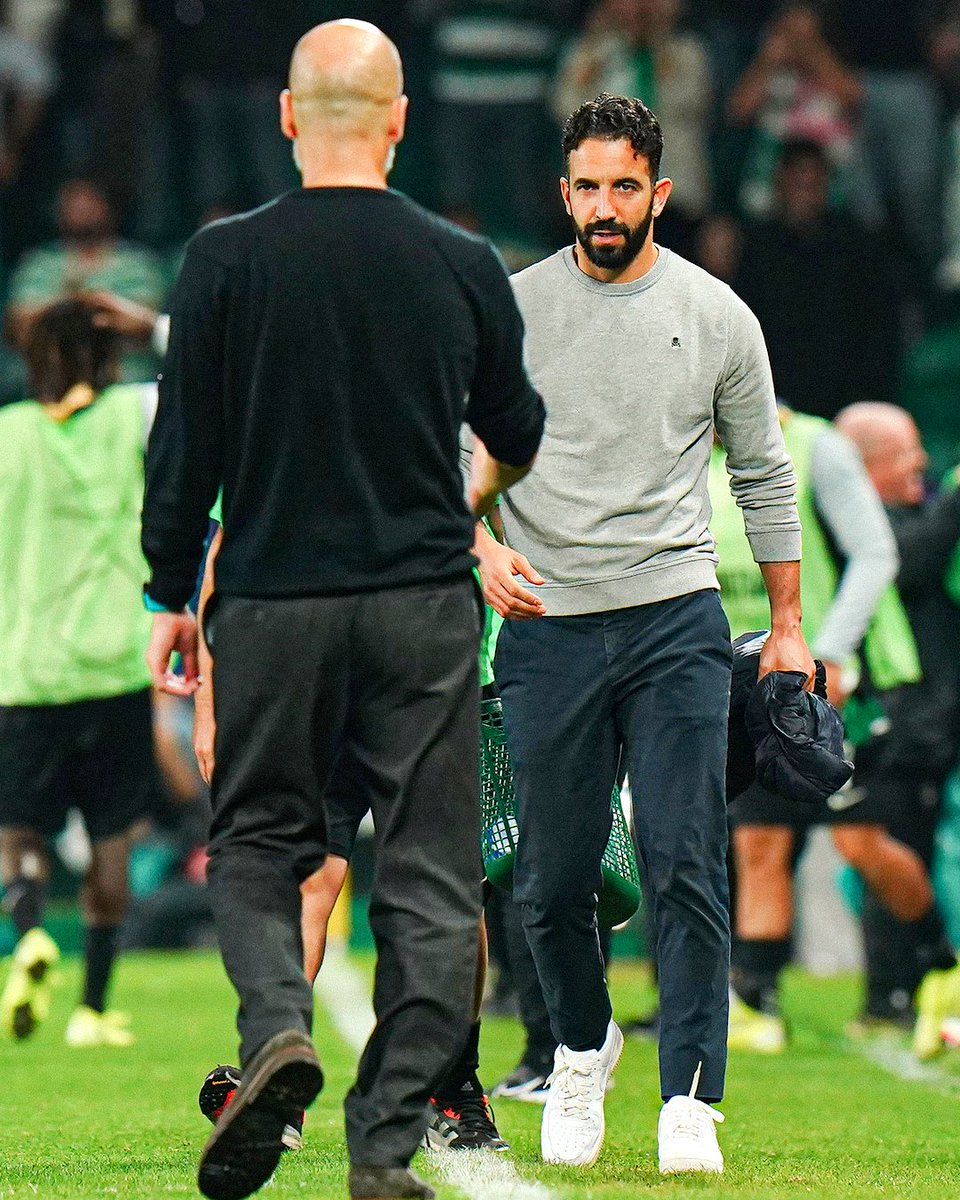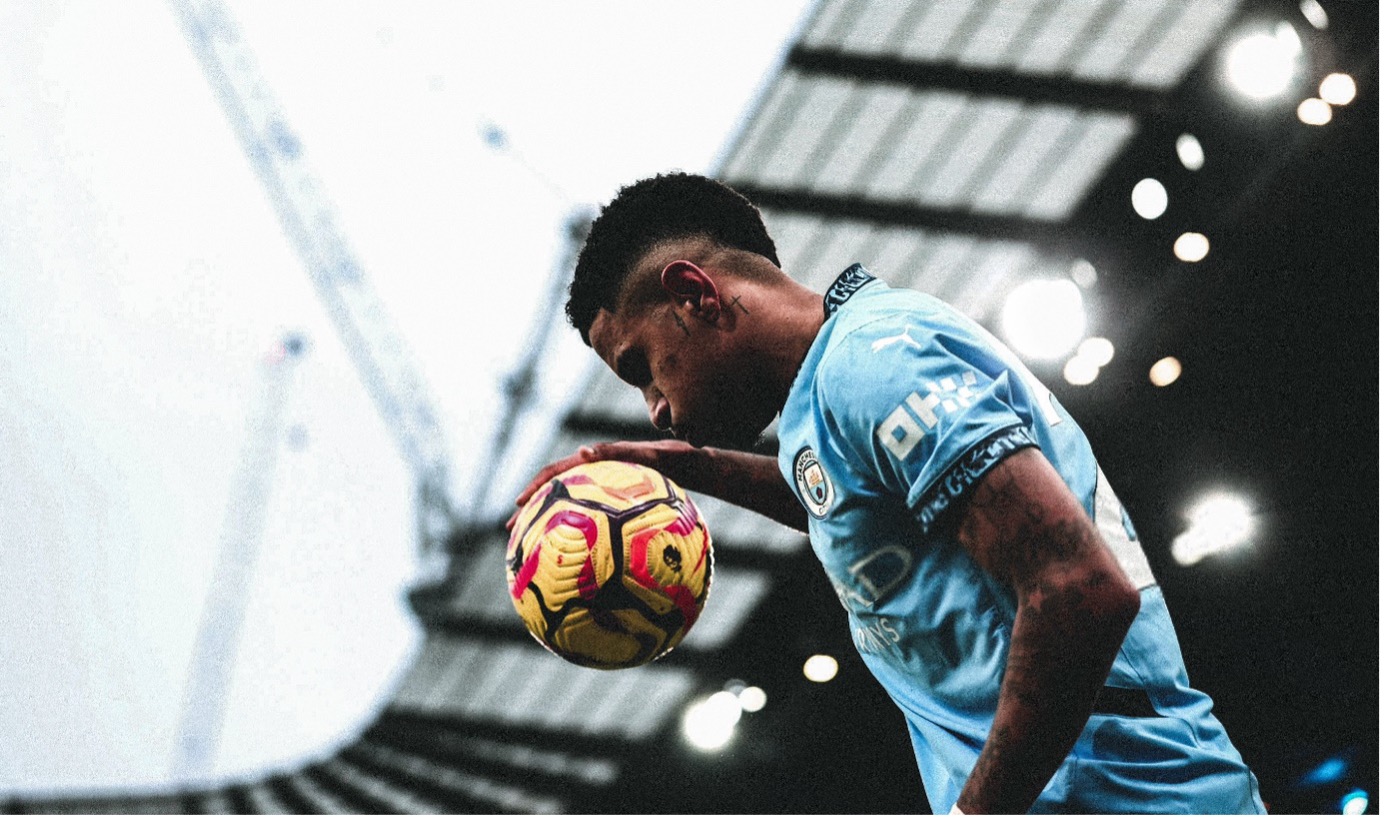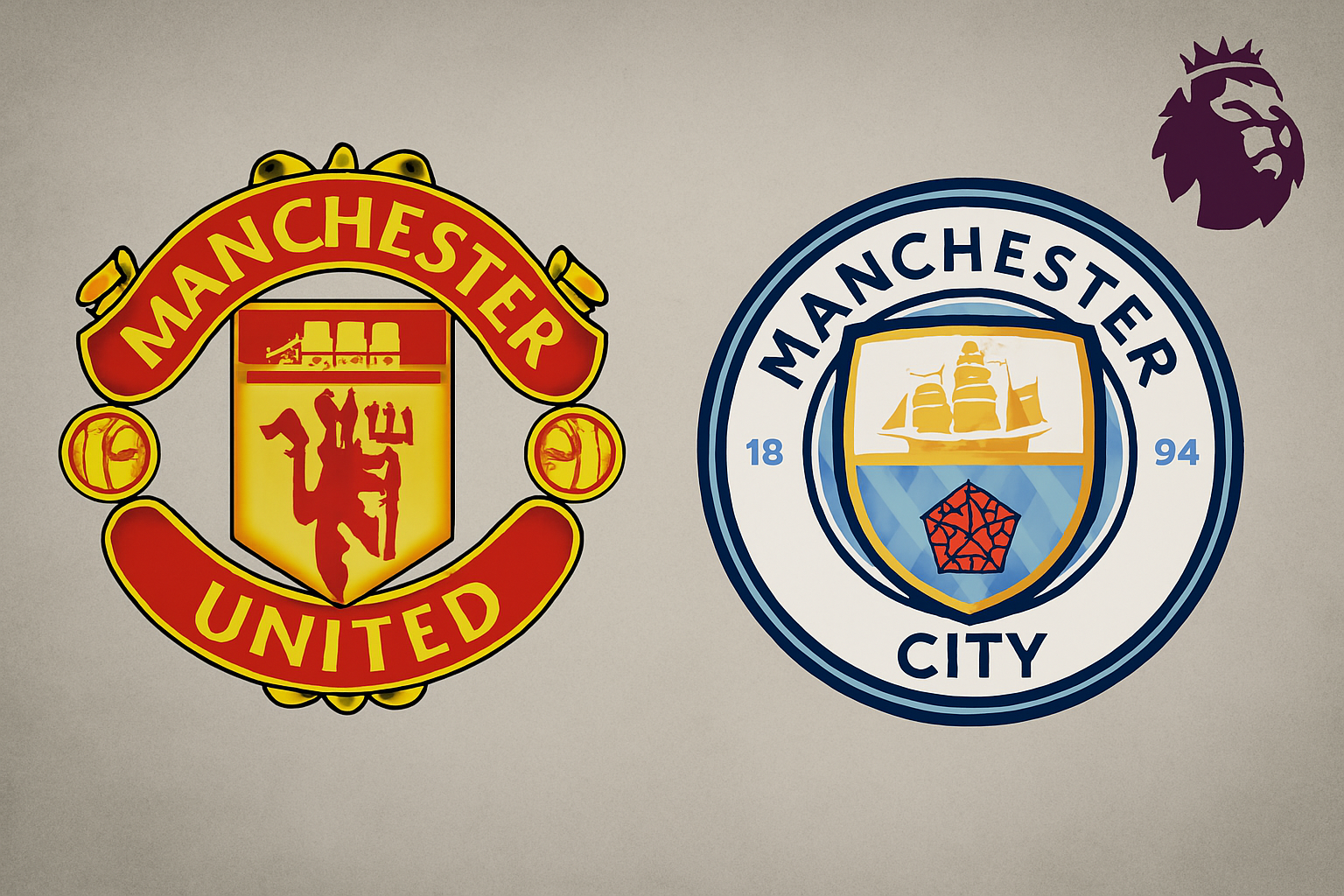Manchester Derby preview: Amorim’s Tactical Test Against Pep Guardiola
On paper, Manchester City may still appear superior, but Manchester United have frequently turned the tide by relying on limited resources. Especially Ruben Amorim, a manager who won his very first Manchester Derby 1-2 this season at Etihad in the Premier League, where United have shown glimpses of resilience and tactical flexibility.
Clash of Philosophies: Control vs. Aggression
Pep Guardiola’s footballing philosophy is well-known for his “Total Control” principle, which remains intact. Even though his game model has evolved multiple times over the years. On the other hand, Ruben Amorim’s footballing principles have gained attention in recent months. Amorim prefers an aggressive, possession-based approach, with a heavy emphasis on wing-backs to stretch and destabilize the opponent’s backline. This is where United face a critical shortcoming: there’s a visible lack of high-quality wing-backs in their current squad.

While Pep’s 4-1-4-1 often morphs into different shapes across phases (build-up, defence, final third), Amorim is expected to stick to his trademark 3-4-2-1. This gives rise to a common problem for any coach: either not having the right players for the formation or the players not being suited to it. Take Luke Shaw, for instance. Though he fits Amorim’s system, he prefers playing in a back four and is unavailable until April due to injury.
Amorim’s system is extremely flexible—defensively, it often collapses into a 5-3-2. When the opposition overloads one flank, three of the five defenders form a compact structure, while the remaining two aim to block central zones (Zone 14). In the build-up, Amorim prefers a 2-3 shape to occupy those same central spaces.
Key Players & Injury Concerns
Both teams face potential absences ahead of the derby:
- Manchester United: Kobbie Mainoo, Matthijs de Ligt, and Jonny Evans are reportedly doubtful.
- Manchester City: John Stones, Manuel Akanji, and Erling Haaland are significant absentees, potentially out until May.

On the flip side, Rasmus Højlund continues to struggle. United’s long-standing issue has been their inability to consistently progress the ball into the final third. Højlund has an on-target xG of just 3.49 and has scored only 3 goals, which reflects the team’s lack of creativity. Under Ten Hag, United often relied on counters. But with Amorim, the playing style has shifted toward more possession-based control.
Game Dynamics and Trends
A key pattern emerges here—City have conceded 34 goals in the first half this season, significantly more than the 23 they conceded in the second half. Meanwhile, despite conceding 13 in the first half, United often leaks more goals in the second half due to a lack of defensive structure during penetrations. However, United still leads the comeback charts; while City have made 5 comebacks this season, United have turned games around 8 times (4 wins and 4 draws).
The Manchester Derby hasn’t ended in a draw in the last 12 meetings. Beyond the data, this will also be a game played on emotion. City could go all out to win, as they need the victory to keep their UEFA Champions League hopes alive. For United, it’s a game of pride.
Expected XI
-
Manchester United (3-4-2-1): A. Onana N. Mazraoui, H. Maguire, L. Yoro, D. Dalot, M. Ugarte, Casemiro, P. Dorgu, A. Garnacho, B. Fernandes (c) R. Højlund
-
Manchester City (4-1-4-1): Ederson M. Nunes, R. Dias, J. Gvardiol, N. O’Reilly N. González Savinho, B. Silva, P. Foden, J. Doku O. Marmoush
Discover more from
Subscribe to get the latest posts sent to your email.
